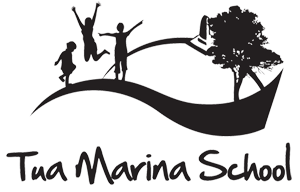Mathematics and Statistics Curriculum Statement
In Mathematics and Statistics, students explore relationships in quantities, space, and data and learn to express these relationships in ways that help them to make sense of the world around them.
Beliefs
- Students need to develop the knowledge, skills and attitudes that enable them to confidently solve the mathematical problems of everyday life
Learning Goals
Through our teaching and learning programmes our students should be able to solve mathematical and statistical problems in a range of meaningful contexts, that include:
- Number and Algebra
- demonstrate understanding of what numbers are and how they work.
- demonstrate ability to accurately process number (calculate) using appropriate technology.
- demonstrate the ability to make reasonable estimates and can confirm their answers
- recognise patterns and relationships in maths.
- Geometry and Measurement
- recognise and use the properties and symmetries of shapes
- describe position and movement
- be able to quantify the attributes of objects
- be able to use appropriate measuring equipment and units of measure.
- Statistics
- be able to collect and display data using the appropriate method & interpret statistical information
Teaching and Learning Guidelines
Our teaching and learning programmes will:
- Reflect the need to give priority to student achievement in numeracy – NAG 1 (Refer to ‘1.1 Tua Marina School Student Achievement Procedure’).
- Identify target groups, including Māori / Pasifika / G&T/ ESOL/ SN
- Reflect effective practice i.e. Expectations; Instructional Strategies; Engaging learners; Partnerships; Knowledge of the learner; and Knowledge of mathematical learning
- Have high expectations for all students
- Show patterns of progress through the school
- Use deliberate acts of teaching and instructional strategies across the school (Tua Marina School Best Practice Guidelines and Numeracy Project)
- Vary approaches to teaching
- Have learning intentions, feedback and next learning steps
- Form partnerships within the school and across the community
- Use Professional Development Programmes and Readings to strengthen teachers’ practice
- Link to key competencies, principles and values
- Consider the learning environment – intellectual, emotional, physical, and cultural engagement
- Relate to National Standards
Planning
- Programmes will reflect the need to give priority to numeracy.
- The New Zealand Curriculum will provide the basis for the teaching and learning programmes.
- Refer to MOE resources when planning e.g. TKI, Norm-referenced assessment tools (eg e-asTTLe), nzmaths website, Numeracy Project, etc.
- Planning will follow a coherent pathway from curriculum plans to long term plans to unit or weekly planning to teaching and learning (Refer to ‘1.15 Tua Marina School Planning Guide’, attached long term plan, Numeracy Project planning templates, and school planning template).
- Assessment data and information about students will be used to determine the teaching and learning programme.
Assessment
Information on student achievement will be gathered and analysed through a range of assessment practices. For guidelines refer to ‘1.13 Tua Marina School Assessment and Reporting Procedure’ and ‘1.13 Assessment-Reporting Overview’


